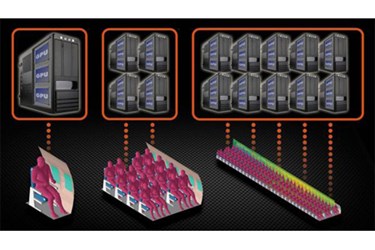Analysis Of Wi-Fi Propagation in Aircraft Interior Using MPI + GPU Technology

Remcom continues to improve the performance of XFdtd Release 7 (XF7) by combining the power of XStream with Message Passing Interface (MPI) technology. While MPI has allowed XFdtd simulations to be distributed across a cluster of CPUs for a long time, running simulations using clusters of GPU-enhanced machines is now supported as well. Complementing this technology with unlimited memory support gives XF7 the robustness to simulate massive problems exceeding billions of cells.
Simulation improves product safety and performance in a variety of applications; however, the memory constraints for vast problem spaces and the enormous computation times on CPU-based platforms have made simulation of certain applications impractical until now. This advance promises to bring the benefit of simulation to new arenas.
For example, simulating WiFi performance inside the passenger compartment of an aircraft was complicated by the large size of the cabin and the high frequencies involved. Using XF7’s MPI + GPU feature, Remcom performed this experiment, with and without human passengers, on 24 NVIDIA M2090 GPUs installed in the NVIDIA PSG Cluster. The cluster, provided courtesy of NVIDIA Corporation, completed this 94 GB simulation (2.84 billion cells) in less than 1.75 hours.
Get unlimited access to:
Enter your credentials below to log in. Not yet a member of RF Globalnet? Subscribe today.
